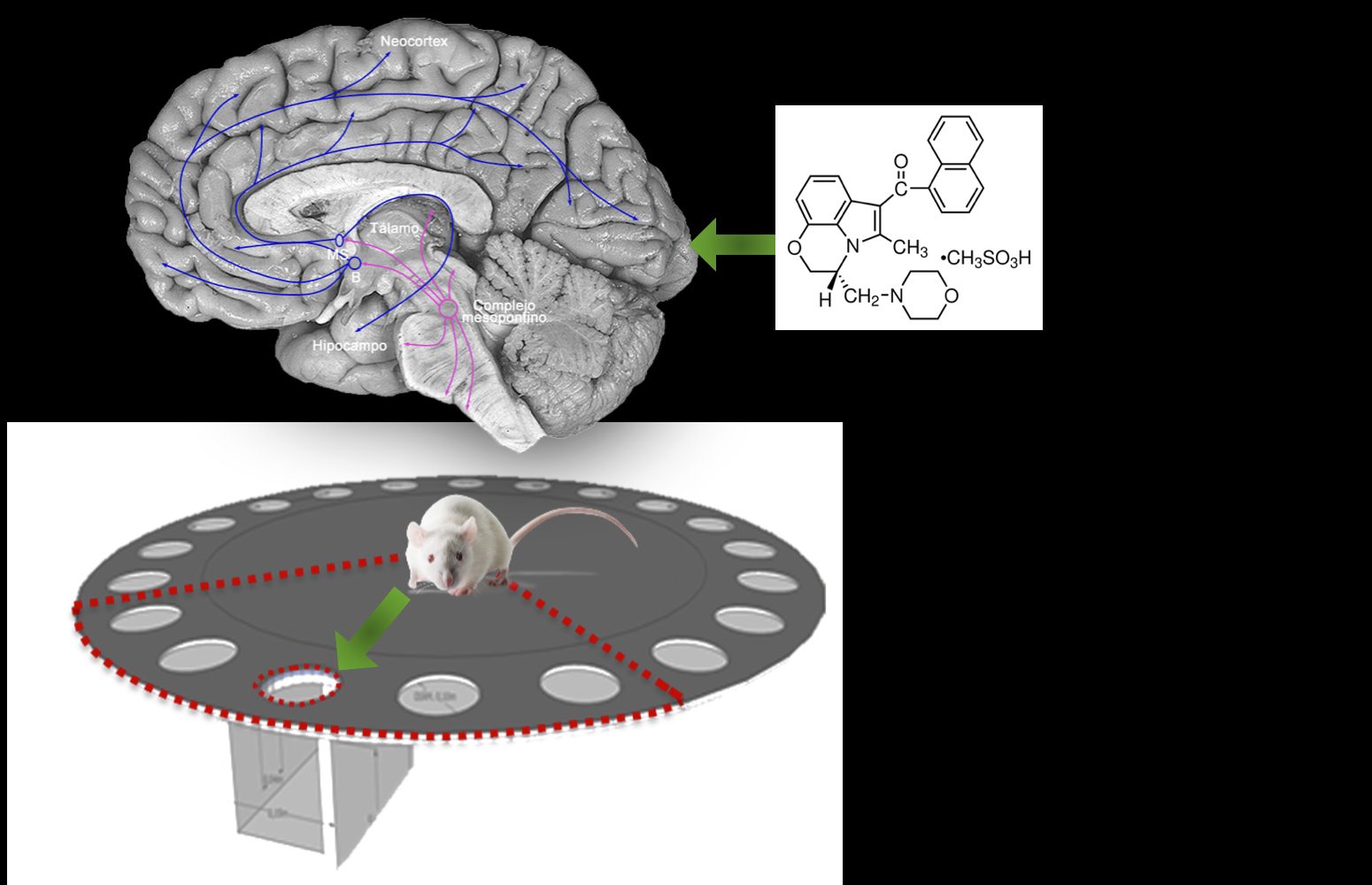The UPV/EHU's Neurochemistry and Neurodegeneration group has come up with a drug that is a potential candidate for tackling memory deficits in the early stages of the disease in rodents. Research shows that the drug activates the cannabinoid neurotransmitter system (which protects the brain), and this stimulates the cholinergic system (which controls memory and learning) by increasing the synthesis of acetylcholine (a neurotransmitter in the brain that controls memory and learning). These results open up a promising therapeutic approach.
A molecule is shown to produce cognitive improvement in rodents with early Alzheimer's disease
A University of the Basque Country (UPV/EHU) study proves that the WIN55.212-2 drug protects the brain and reverses the initial cognitive damage caused by dementia, and explains how it works
- Research
First publication date: 14/01/2025

Research spanning more than 20 years has led the UPV/EHU’s Neurochemistry and Neurodegeneration group under Dr Rafael Rodríguez-Puertas to discover a promising avenue for the development of new therapies that improve memory in cases of cognitive impairment in neurodegenerative diseases such as Alzheimer's and Parkinson's. The study carried out by Dr Marta Moreno-Rodríguez in the UPV/EHU group showed that the neurotransmitter receptors in the cannabinoid family and certain choline-containing lipids in the brain contribute towards cognitive improvement in rats.
The researcher Rodríguez-Puertas explained that “analyses carried out over the years on a very large sample of brain tissue from autopsies of patients who were at different stages of development of the disease enabled us, intriguingly, to see that when the first clinical symptoms of Alzheimer's emerge, damage is found in the area that is initially affected in patients and is caused by one of the interneuronal transmission systems, the cholinergic system (which controls memory and learning and uses acetylcholine as a neurotransmitter); by contrast, we saw that another neurotransmission system, the cannabinoid system, increases”. The team also found that as the disease progresses, the cannabinoid system also ends up damaged: “It's as if this cannabinoid system has an initial protective response to the damage of the cholinergic system and tries to protect the brain,” he said. “It is therefore a therapeutic target on which to act.”
After testing the effect of the drug WIN55.212-2, which interacts with cannabinoid receptors, on rodents in the early stages of the disease, the team found “that they behaved in the same way as those without brain damage: they learned and remembered spatial orientation in the same way”, explained Marta Moreno. “You could say that in some way the drug reversed the damage or protected the brain.”
A novel technique to identify and locate lipids in the brain
The research group was able to understand the mechanism of this cognitive improvement “by using a novel technique developed and fine-tuned by the research group at the UPV/EHU and which enables the lipids in the brain to be identified and anatomically located. That way we saw that, after treatment, the activity of the cannabinoid system had increased; and also that there was an increase in the activity of the patients’ cholinergic neuronal receptors that had been damaged, and also that there was an increase in the synthesis of certain lipids containing choline, which are precursors of acetylcholine, a neurotransmitter that controls memory and learning in the brain”, explained Rafael Rodríguez. In other words, “the cannabinoid receptors were seen to be activated and the acetylcholine levels in the brain to be increased. The drug restored the cholinergic system and improved memory”, added Moreno.
Rafael Rodríguez believes that “this molecule could become a drug to treat the symptoms of dementia, at least during the initial stages of the disease, because we have already seen that the body itself, physiologically, tries to do something similar”. “With these pharmacological treatments we could help to enhance that effect, or perhaps even apply a mixed treatment of cannabinoid drugs with acetylcholine precursors,” he suggested.
Seeking similar molecules to move on to clinical trials
Although the results of the tests on rodents were very promising, and the next step would be to study their toxicity and move on to clinical testing on humans, the research team has come up against the obstacle that the molecule is a free-to-use molecule, in other words “it is a synthesis molecule that is widely used in experimentation; we did not synthesise it ourselves. It is not a molecule that a particular pharmaceutical company can exploit. Toxicology studies and clinical trials constitute a major investment for the pharmaceutical industry and this molecule does not offer them the possibility of future commercial exploitation”; so they are now working to find and synthesise molecules similar to WIN55.212-2 that could be of interest to the pharmaceutical industry and thus pave the way towards the clinical study of this new therapeutic pathway. To this end, they are working in collaboration with CIC bioGUNE and the University of Vigo.
Additional information
This study is the outcome of many years of uninterrupted work and of the PhD thesis of the researcher Marta Moreno-Rodríguez, written up under the supervision of Rafael Rodríguez-Puertas, a tenured doctoral researcher and leader of the UPV/EHU’s Neurochemistry and Neurodegeneration research group. Marta Moreno is currently working at the Barrow Neurological Institute in Arizona (USA).
The tissue samples analysed over the years came from the Basque Biobank, the Central University Hospital of Asturias and the Barrow Neurological Institute (USA).
Bibliographic reference
- Cognitive improvement via cortical cannabinoid receptors and choline-containing lipids
- British Journal of Pharmacology
- DOI: 10.1111/bph.17381







